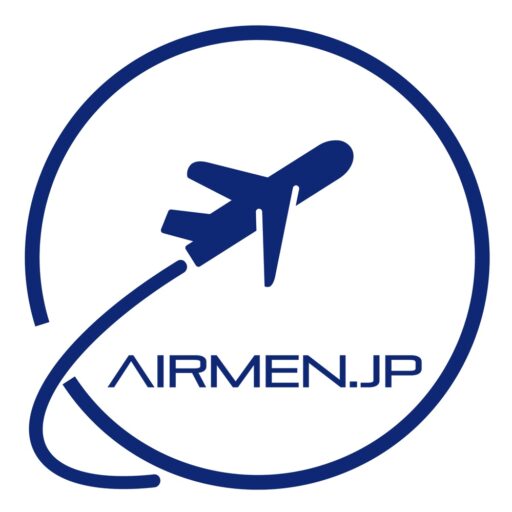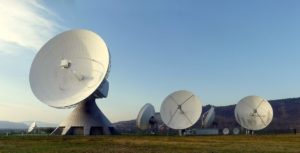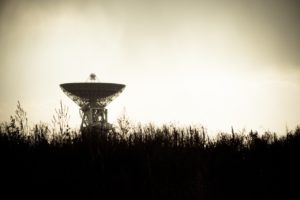131. ILS
a. ILS (instrument landing system / 計器着陸用施設 ) は最 終進入中の航空機に滑走路に対する正確な進入経路 ( 方向 と降下経路 ) を示す施設である。
地上施設は、基本的にローカライザー (localizer / LOC) およびグライドスロープ (glide slope / GS) の2つの指向性 電波を発射する送信装置と進入コース上に設置されている マーカービーコンによって構成されている。 ただし、アウ ターマーカーとミドルマーカーは DME フィックスで代用 することができる。
ILS 進入の運用にあたっては、上記の構成施設のほかに 視覚情報施設として、進入灯 , 接地帯灯 , 滑走路中心線灯, 滑走路灯等が設置されている。 注 1 ) ILS の識別符号はモールス信号で、I (‥) で始まる
3 文字(米軍飛行場では 4 文字)から成り、ローカラ
イザー周波数により発信される。 注 2 ) 1本の滑走路の両側に ILS が設置されている場合、
異なる周波数の電波であれば両側に同時に発射される
ことがある(例:福岡)。 ただし CAT – Ⅱ / Ⅲでは異な
る周波数で あ っても両側に同時に発射されることはな
い。 b . ローカライザー :(LOC / localizer)
ローカライザー送信装置は 108.0MHz から 111.975MHz ま での周波数帯を使用した 40 チャンネルの中のひとつを使っ て、 滑走路中心線への誘導コースを示す信号を発射する。
滑走路先端よりさらに前方にある送信装置から発射され ているローカライザー信号のコース幅 ( 表示装置の一番左 のドットから一番右のドットまでの幅 ) は滑走路進入端で 約 210 メートル (700 フィート ) になるように調整されて いるので、 滑走路の長さによって異なる。 最大は 6°から、 4,000 メートルクラスの長い滑走路では 3°以下となる。
ローカライザーのコースは通常 滑走路の中心線に合致 して設定されるが、 5°以内の範囲でオフセットしている場 合もある。 ローカライザーのコースは磁方位で公示され ている。
131. I LS
a. ILS (Instrument Landing System) is designed to provide
an approach path for exact alignment and descent of an aircraft on final approach to a runway. The ground equipment basically consists of two directional signals of the localizer (LOC) and glide slope (GS) as well as directional marker beacons installed along the approach course. However, the outer marker and middle marker may be replaced by a DME fix.
Visual aids of approach lights, PAPI, runway edge lights, runway threshold lights, runway centerline lights and touchdown zone lights are additionally installed for the ILS operations.
Note1 : An identification signal is composed of three letters (
four letters at an airport administrated by the US military), always beginning with “I” and transmitted on a localizer frequency. Note2 : If an ILSs are installed on both ends of the runway, simultaneous transmissions of the ILS signals are not conducted on the same frequency in order to prevent interference (even on the different frequencies in CAT II or CAT III operations).
b . Localizer : Localizer is operated with one of the 40 ILS channels within the frequency range of 108.0 MHz ~ 111.975 MHz signals, which provides course guidance to a pilot.
Horizontal distribution of the localizer signals (indications between a full “fly-left” and a full “fly-right” on CDI) is adjusted so as to cover 210m (700 feet) of width at the landing threshold. The signals are originated from the localizer antenna installed beyond the departure end of the runway, therefore, the lateral beam angle varies depending on the runway length.
Maximum angle of 6 degrees is applied; however, it becomes 3 degrees or less for a 4000m class runway.
Generally, a localizer course coincide to the extension of runway centerline, however, it may be offset within 5 degrees when operational reasons require. The localizer course is published in magnetic bearing.
Note3 : The course line along the extended centerline of a runway, in the opposite direction to the front course is called the “back course”. However, approach procedures utilizing the back course have not been authorized in Japan.
The localizer provides course guidance within the shaded area in the figure 1-2, throughout the descent path to the runway threshold from a distance of 25 (18) nm.












